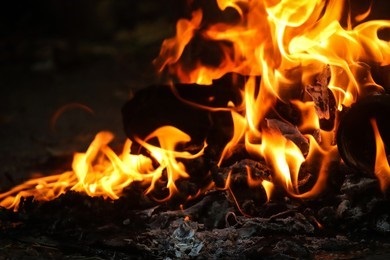Reactive hazardous wastes refer to wastes that are explosive and produce flammable or toxic gases in contact with water or acids, as well as waste oxidants or organic peroxides. Easy to burn and friction may catch fire waste is a combustible waste. With combustible and reactive hazardous waste, because of its own high susceptibility to violent reactions, resulting in its treatment process and process control is very difficult and easy to produce secondary environmental pollution in the treatment process. At present, incineration and landfill method is the primary disposal method of hazardous waste.

However, to ensure that the physical and chemical properties of the incoming waste are stable, the hazardous waste should be formulated before incineration. To better assist researchers in the field of waste treatment to treat waste in a more scientific, optimal, and rational way, Lifeasible provides waste corrosiveness, toxicity, and metal content tests, in addition to waste flammability and reactivity tests, so that the calorific value, the content of major organic hazardous components, heavy metal content, sulfur content, moisture, and ash content of the waste to be treated indicators to meet the design requirements of the incineration facility.
| Domestic waste | Food waste, packaging waste, manure, ashes, green waste, special waste, etc. |
| Industrial waste | Construction waste, waste slag, waste chips, waste plastic, waste chemicals, sludge, tailings, packaging waste, green waste, special waste, etc. |
| Agricultural waste | Agricultural waste, crop waste, dung, animal carcasses, green waste, special waste, etc. |
| Projects | Details |
| Combustible hazardous waste characteristics test | |
| Preliminary sieving test | Lifeasible uses an automated flammable solids sifter to test whether the waste should be included in the flammable stationary waste category to determine whether a subsequent process is required. |
| Hazardous characteristics determination test |
|
| Applicable packaging category test | Based on the results of the above tests, Lifeasible gives the recommended packaging standards for a specific category of waste. |
| A reactive hazardous waste characterization test | |
| Preliminary sieving test | Lifeasible uses the sieve, Koenen, and time/pressure tests to determine whether the waste is combustible or flammable thus determine whether a subsequent process is required. |
| Hazardous characteristics determination test |
|
| Applicable packaging category test | Based on the results of these tests, Lifeasible provides recommended packaging standards for specific categories of waste. |
Different hazardous wastes have their own unique physical and chemical properties and hazards. In the specific disposal process, researchers combine the accurate hazardous waste test results provided by Lifeasible to choose the appropriate hazardous waste disposal method and procedure, which can reduce the hazardous impact of the waste and ensure the efficiency of waste disposal. Please contact our staff for more information on hazardous waste flammability and reactivity solutions.
Lifeasible has established a one-stop service platform for plants. In addition to obtaining customized solutions for plant genetic engineering, customers can also conduct follow-up analysis and research on plants through our analysis platform. The analytical services we provide include but are not limited to the following:
Get Latest Lifeasible News and Updates Directly to Your Inbox
Adaptive Evolutionary Mechanism of Plants
February 28, 2025
Unraveling Cotton Development: Insights from Multi-Omics Studies
February 27, 2025